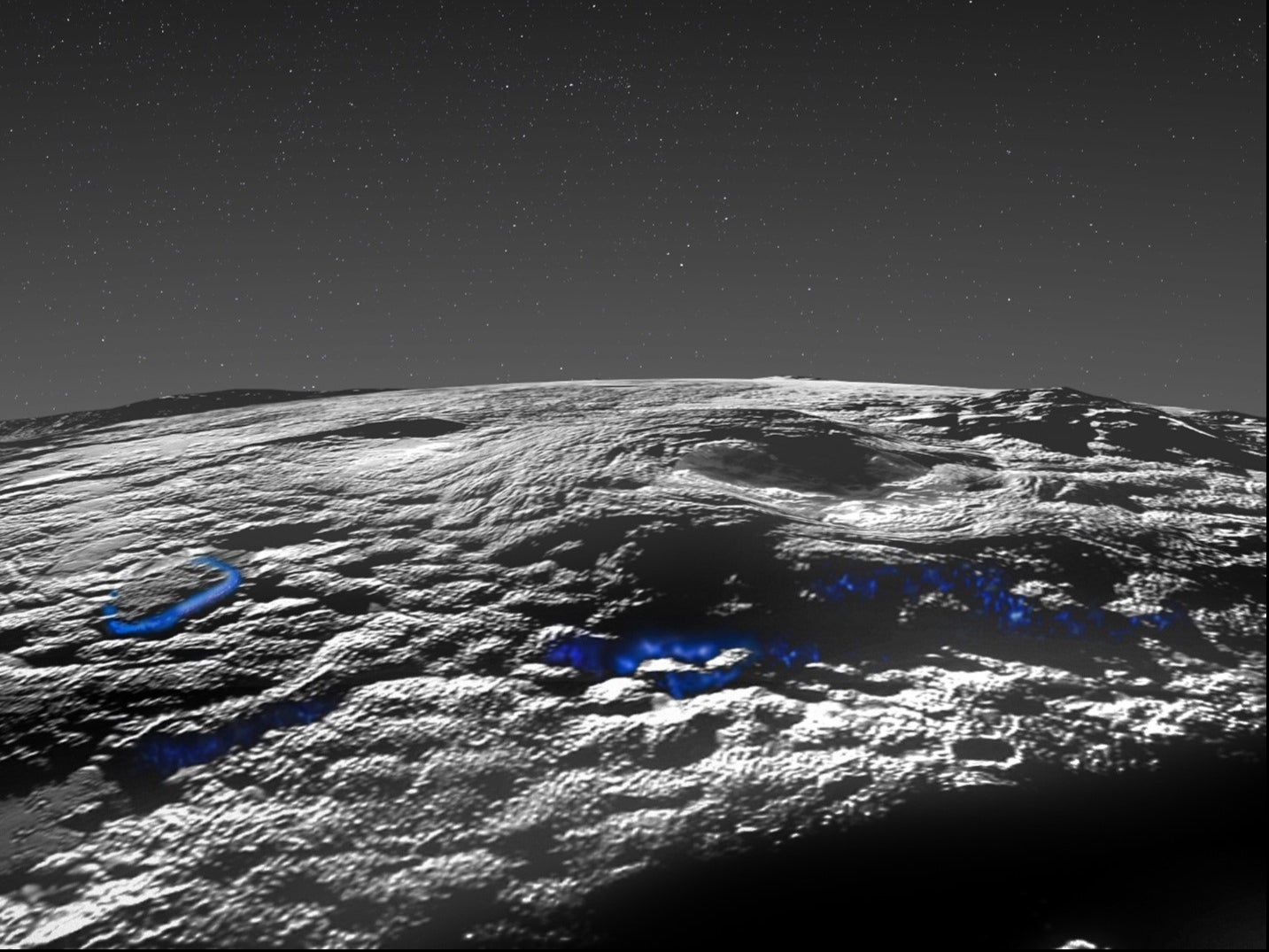Pluto’s ice volcanos create structures ‘never before seen in the solar system’, scientists say
‘Cryovolcanism’ created icy hills and mounds on the planet that scientists were not expecting

Your support helps us to tell the story
From reproductive rights to climate change to Big Tech, The Independent is on the ground when the story is developing. Whether it's investigating the financials of Elon Musk's pro-Trump PAC or producing our latest documentary, 'The A Word', which shines a light on the American women fighting for reproductive rights, we know how important it is to parse out the facts from the messaging.
At such a critical moment in US history, we need reporters on the ground. Your donation allows us to keep sending journalists to speak to both sides of the story.
The Independent is trusted by Americans across the entire political spectrum. And unlike many other quality news outlets, we choose not to lock Americans out of our reporting and analysis with paywalls. We believe quality journalism should be available to everyone, paid for by those who can afford it.
Your support makes all the difference.Pluto is home to strange “ice volcanos” never before seen in the solar system, scientists have discovered.
Multiple episodes of a process known as cryovolcanism created the hills and mounds on the icy planet from below its surface, which were spotted by Nasa’s New Horizons probe that passed the dwarf planet in 2015.
“The particular structures we studied are unique to Pluto, at least so far,” said Dr Kelsi Singer, New Horizons deputy project scientist from the Southwest Research Institute, and lead author of the paper published in Nature Communications.
“Rather than erosion or other geologic processes, cryovolcanic activity appears to have extruded large amounts of material onto Pluto’s exterior and resurfaced an entire region of the hemisphere New Horizons saw up close.”
Analysing the Sputnik Planitia, the icy ‘heart’ of the planet, scientist found that there were huge domes up to seven kilometres tall and over 100 kilometres across, with some of the largest structures equal in stature to the Mauna Loa volcano in Hawaii.
Despite chemicals like ammonia that would lower the melting temperature of water ices, Pluto’s temperatures and atmospheric pressure still rapidly freezes liquid on its surface.
It is also possible that Pluto’s interior structure retained heat for a long period of time, because this icy terrain is relatively young.
Cryovolcanic flows like these, capable of creating such massive structures, implies that the material had toothpaste-like consistency – behaving like solid ice glaciers flow on Earth. Alternatively, the flows could have had a frozen shell with material moving underneath it.
“One of the benefits of exploring new places in the solar system is that we find things we weren’t expecting,” said Dr Singer. “These giant, strange-looking cryovolcanoes observed by New Horizons are a great example of how we are expanding our knowledge of volcanic processes and geologic activity on icy worlds.”
Join our commenting forum
Join thought-provoking conversations, follow other Independent readers and see their replies
Comments